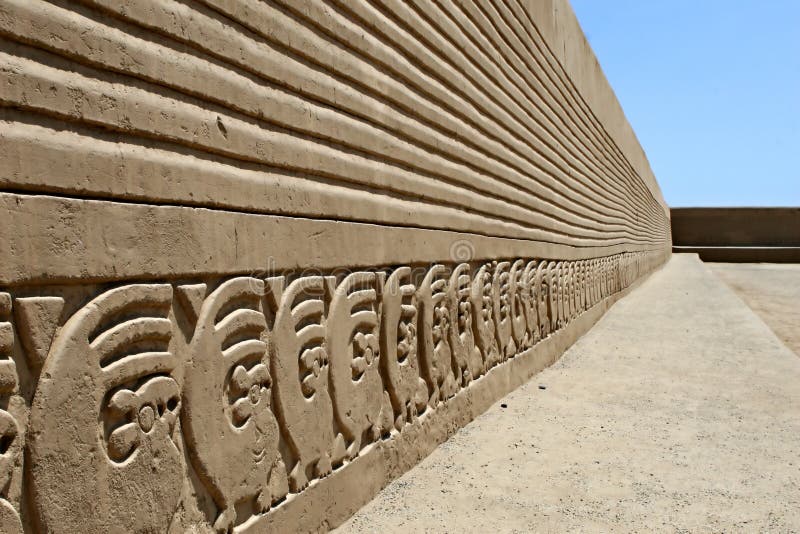
"The Chimú saw food as the tangible love their gods gave them," Ortloff says. The Humboldt Current off Peru pushes nutrient-rich water up to the ocean's surface and gives rise to one of the world's richest marine biomasses, says Joanne Pillsbury, director of pre-Columbian studies at Washington, D.C.'s Dumbarton Oaks, a research institute of Harvard University. While erratic water supplies created myriad challenges for agriculture, the Chimú could always count on the bounty of the sea. Around 1300, they apparently gave up on the project altogether. Ortloff believes the canal builders must have been thwarted by the shifting earth. Although the Chimú had no written language for recording measurements or drafting detailed blueprints, they were somehow able to carefully survey and build their massive canal through difficult foothill terrain between two valleys. He points out that Chimú engineering methods were unknown in Europe and North America until the late 19th century. The Chimú civilization was the "first true engineering society in the New World," says hydraulic engineer Charles Ortloff, who is based in the anthropology department of the University of Chicago.

When a drought, coupled with movements in the earth's crust, apparently caused the underground water table to drop sometime around the year 1000, Chimú rulers devised a bold plan to divert water through a canal from the Chicama River 50 miles to the north. Still, Chan Chan's fields and gardens flourished, thanks to a sophisticated network of irrigation canals and wells. The city was established in one of the world's bleakest coastal deserts, where the average annual rainfall was less than a tenth of an inch. According to Chimú myth, the sun populated the world by creating three eggs: gold for the ruling elite, silver for their wives and copper for everybody else. The Chimú followed a strict hierarchy based on a belief that all men were not created equal. By the 15th century, as many as 60,000 people lived in Chan Chan-mostly workers who served an all-powerful monarch, and privileged classes of highly skilled craftsmen and priests. The adobe metropolis was the seat of power for an empire that stretched 600 miles from just south of Ecuador down to central Peru. Located near the Pacific coast city of Trujillo, Chan Chan was the capital of the Chimú civilization, which lasted from A.D. Today, however, Chan Chan is threatened by too much water, as torrential rains gradually wash away the nine-square-mile ancient city. Chan Chan was fabulously wealthy, although it perennially lacked one precious resource: water.


Palaces and temples were decorated with elaborate friezes, some of which were hundreds of feet long. Ten thousand structures, some with walls 30 feet high, were woven amid a maze of passageways and streets. During its heyday, about 600 years ago, Chan Chan, in northern Peru, was the largest city in the Americas and the largest adobe city on earth.


 0 kommentar(er)
0 kommentar(er)
